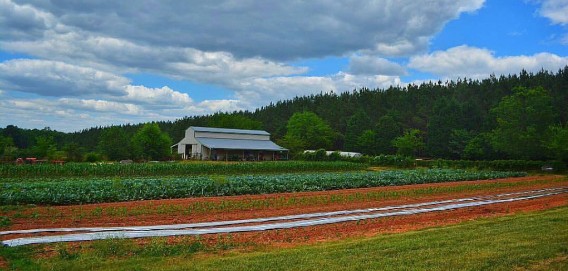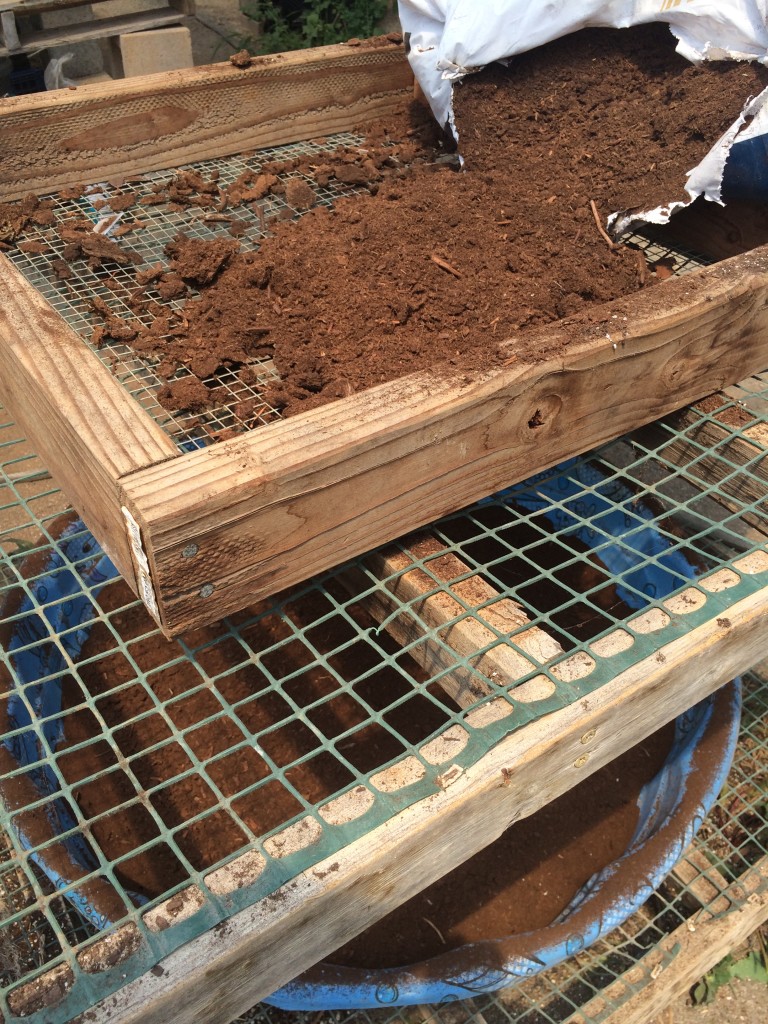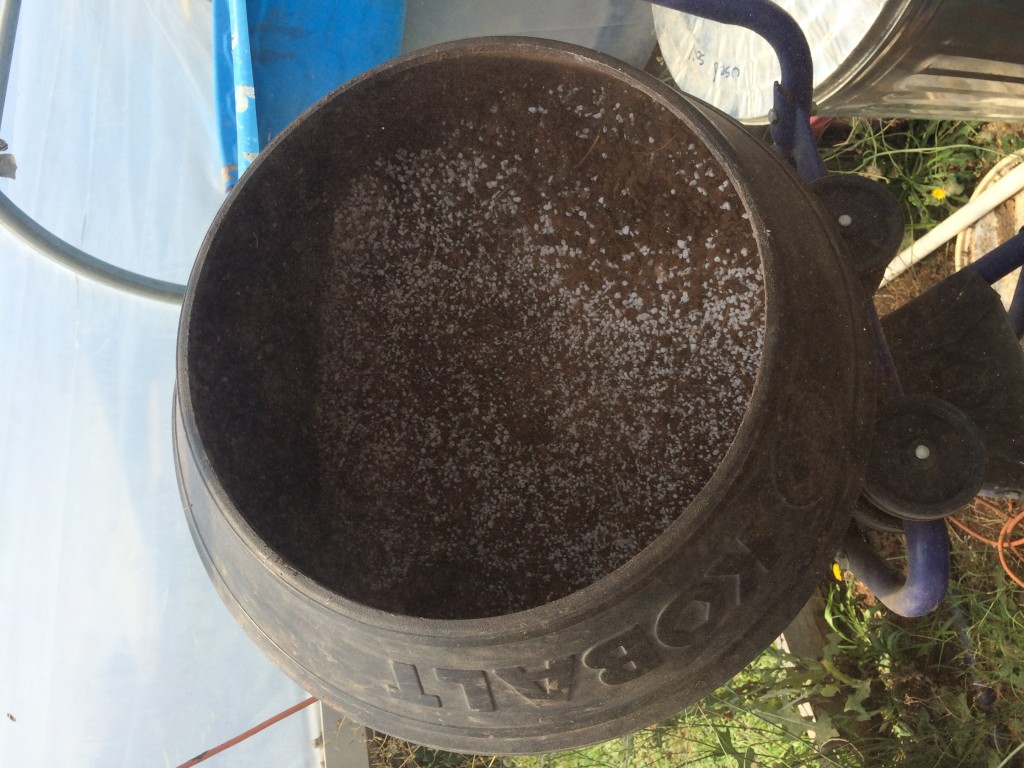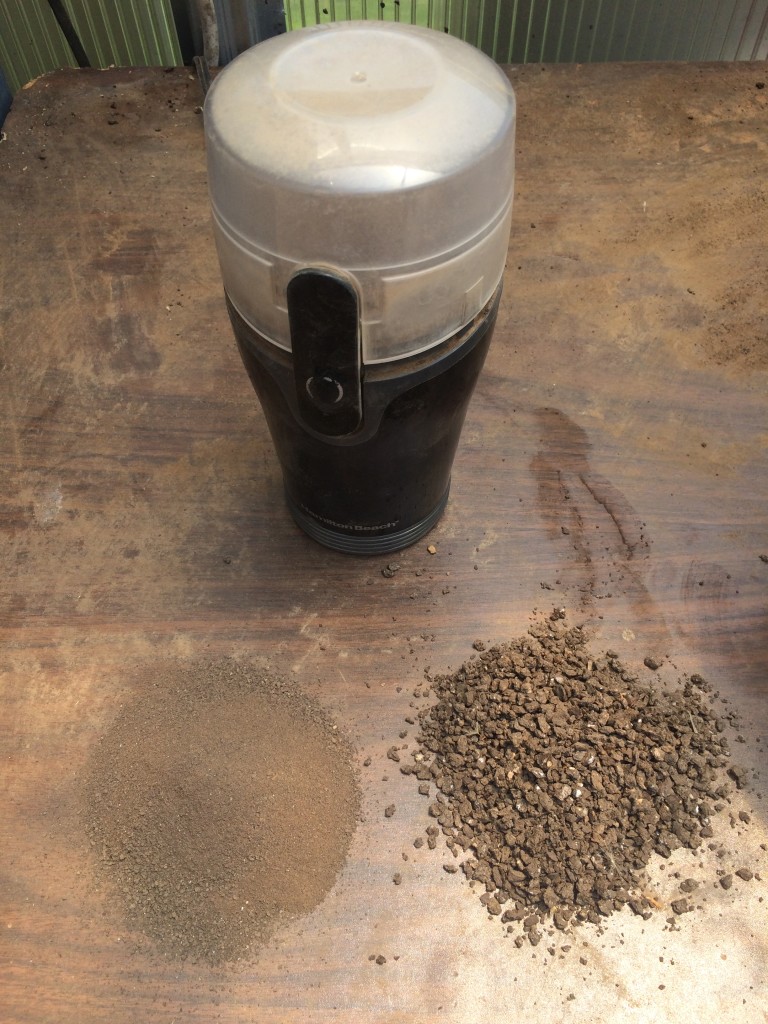by Aaron Newton, CFSA’s Lomax Farm Coordinator

Photo by J.H Photo
Providing consistent access to nutrients during the early stages of transplant development is a problem many organic growers face. At Lomax Farm we’ve developed a strategy that addresses nutrient availability in transplant production and uses some key, low-cost equipment to accomplish the task.
This fall, we will be testing different seed-starting recipes, and we will share those results with everyone later this year. For this Expert Tip, however, we will focus on equipment, and we’ll be using a standard recipe as an example.
Seed Starting Soil:
Ingredients:
10 gallons peat moss
5 gallons perlite
5 gallons compost
½ cup lime
1 cup greensand
2 cups pulverized Harmony 5-4-3
Key Equipment:
Sifting Screen
Baby Pool
Cement Mixer
Coffee Grinder

Sifting peat moss, Photo by Aaron Newton
We start by sifting 10 gallons of peat moss to remove large chucks, sticks and other debris. We use a potting table with wire top and a frame with ¼’ mesh to weed out debris. The sifted peat moss falls through and is caught by the baby pool waiting below. This provides a higher quality base material than the peat straight from the bag.
Next, we add the sifted compost to the cement mixer. Then we add perlite, compost, lime and greensand. We run the mixer continuously so as to mix all the ingredients together thoroughly. For less than $200, the mixer helps ensure all the materials are evenly combined throughout the growing media.

Cement Mixer, Photo by Aaron Newton
Lastly, we use a coffee grinder to pulverize the fertilizer (Harmony 5-4-3). You can see from the image that before it is pulverized, the fertilizer is much larger in particle size. This means less even distribution throughout the seed-starting soil. Some cells in the seed-starting tray might receive a large dose of fertilizer- several chucks- while other cells might receive none. After running the fertilizer through the coffee grinder the particle size has been greatly reduced for more even distribution.

Coffee grinder, Photo by Aaron Newton
Fall transplants need to go in high tunnels about 2-4 weeks later than field transplants. Check out our High Tunnel Consulting Services for one-on-one assistance to maximize your High Tunnels!
We then add the fertilizer to the mixing growing media slowly. We stir it with a wooden staff to prevent the injury that could be caused by putting your arm in the mixer. An added advantage to using the mixer is that you can add water to the seed-starting soil and thoroughly mix it in, eliminating the need for a wetting agent.
After a thorough mixing we empty out the growing media into a tub or can with a lid so we can hold in moisture until we’re ready to start our transplants. Using some simple equipment and some basic ingredients, we have mixed our own seed-starting soil with built-in fertility. Of course we can add liquid fish emulsion as a fertility boost if needed, but we can begin the process of starting our own transplants knowing they have the nutrients needed to get started.


